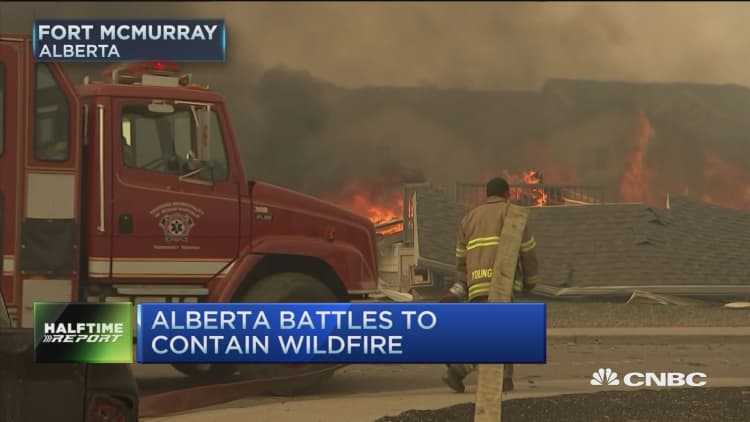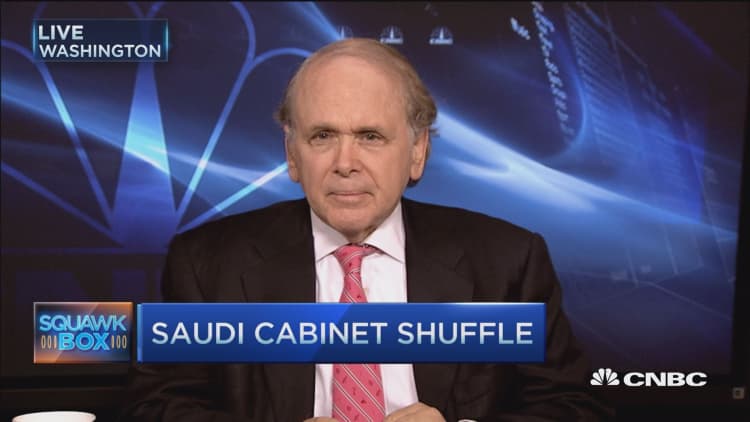


U.S. oil prices fell nearly 3 percent on Monday as traders assessed the impact of wildfires on Canada's oil output and after another reported inventory build at the U.S. hub for crude futures.
The market rallied 2 percent earlier in the session as investors considered the daily loss of more than 1 million barrels per day in Canadian supply. Almost all of Canada's crude from oil sands is exported to the United States.
But with speculators already holding the largest number of wagers for a hike in U.S. crude's West Texas Intermediate futures since last summer and near-record high bullish bets on Brent, the scope for further gains was limited without clarity on the extent of damage to oil facilities or supply outages, analysts said.
Oil prices have risen more than 70 percent since hitting 12-year lows of around $27 or lower in the first quarter, supported by falling U.S. production, unexpected supply constraints in Libya and the Americas as well as a weaker dollar.
Adding to Monday's bearish sentiment was market intelligence firm Genscape's report of an inventory build of 1.4 million barrels at the Cushing, Oklahoma delivery hub for WTI futures.
"Positioning has been already very stretched in the oil market ... Some must have taken the opportunity to exit, so that's one angle that momentum is slowing down," Barclays Capital commodities strategist Miswin Mahesh said.
U.S. crude futures closed down $1.22, or 2.7 percent, at $43.44 a barrel. Brent crude futures fell $1.76, or 3.8 percent, to $43.61 a barrel.
WTI, which usually trades at a discount to Brent, briefly flip to a 17 cent premium earlier in the session.
The fire, which broke out on May 1, has forced three major oil firms to warn they will be unable to deliver on some contracts for Canadian crude.
Canadian officials on Sunday showed some optimism as favourable weather helped fire fighters, driving the flames away from the oil sands town Fort McMurray, but there was no timeline for a restart of operations at evacuated sites.
Prices saw also brief support after Goldman Sachs said it held a long-term view of $50-$60 for WTI.
Markets were also watching Saudi Arabia, the world's biggest oil exporter, where a government shake-up over the weekend included the appointment of Khalid al-Falih as head of the new Ministry of Energy, Industry and Mineral Resources.
"Changes in Saudi Arabia oil leadership only underscore the shift in strategy to one focused on market share over price," Morgan Stanley said.
Some analysts said the wildfire could still be a supportive factor, with officials saying resuming operations would be a challenge and no timeline had been conceived.
"This production is not gone for good, yet when fires are controlled, restarting production will take several more weeks, even without damage," energy analysts at Morgan Stanley said in a note.
China's imports of crude oil rose 7.6 percent in April from a year ago, customs data showed on Sunday, lifted by continued strong demand from domestic private refiners.
The high April inflows were a result of the strong appetite of small domestic independent "teapot" refineries. Beijing has granted licenses to more than 20 of them since last year to import crude for the first time.






